Oracleofthepast - So Yeah, This Is A Thing

More Posts from Oracleofthepast and Others
If you’re European, in a couple of weeks you will be denied any and all access to fandom contents on Tumblr and everywhere else on the internet. Here’s why.
On June, 20th the JURI of European Parliament approved of the articles 11 and 13 of the new Copyright Law. These articles are also known as the “Link Tax” and the “Censorship Machines” articles.
Articles 13 in particular forces every internet platform to filter all the contents we upload online, ending once and for all the fandom culture. Which means you won’t be able to upload any type of fandom works like fan arts, fan fictions, gif sets from your favourite films and series, edits, because it’s all copyrighted material. And you won’t also be able to share, enjoy or download other’s contents, because the use of links will be completely restricted.
But not everything’s lost yet. There’s another round of voting scheduled for the early days of July.
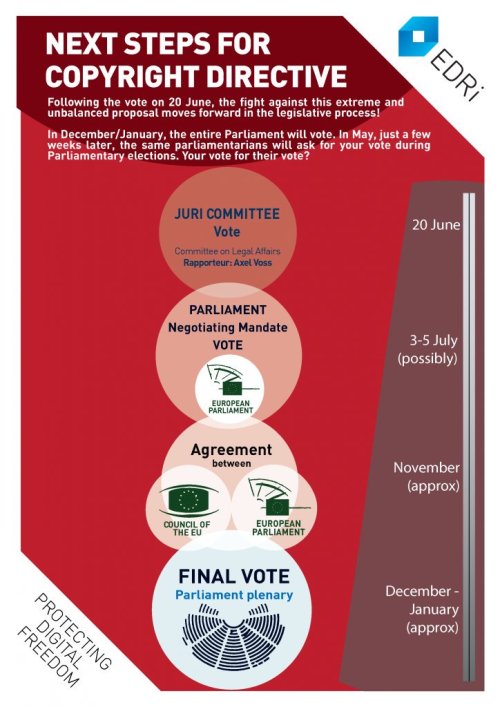
What you can do now to save our internet, is to share these informations with all of your family members and friends, and to ask to your MEP (the members of the European Parliament from your country) to vote NO at the next round, to vote against articles 11 and 13.
Here you can find more news and all the details to contact your MEP:
https://saveyourinternet.eu
Also, sign and share this petition:
https://www.change.org/p/european-parliament-stop-the-censorship-machinery-save-the-internet?recruiter=50668942&utm_source=share_petition&utm_medium=twitter&utm_campaign=psf_combo_share_initial
We have just a couple of weeks to stop this complete madness, don’t let them dictating the way we enjoy our internet.
#SaveYourInternet now!
This specific article is:
“Submarine cables connecting an occupied territory with a neutral territory shall not be seized or destroyed except in the case of absolute necessity. They must likewise be restored and compensation fixed when peace is made.”
Character whose backstory is like “I’m dark and tortured, I committed war crimes”, but eventually the audience finds out that the war crime in question was violation of Article 54 of Treaty IV of the 1907 Hague Conventions.
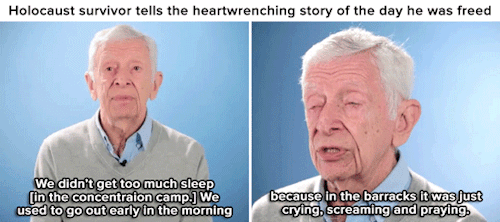
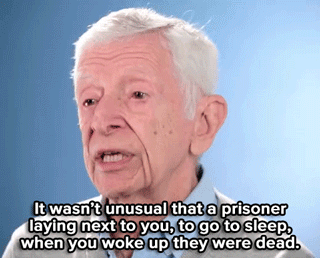
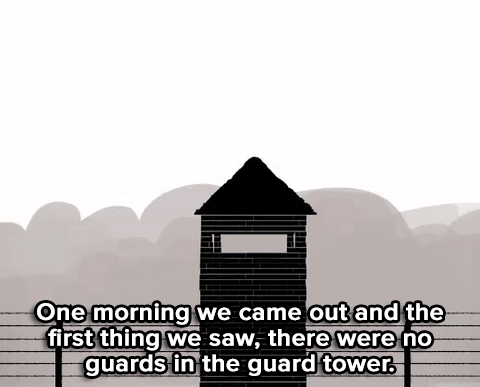
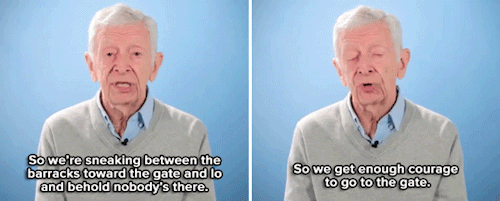
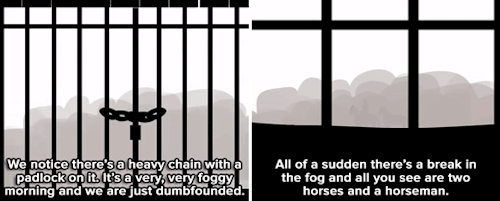
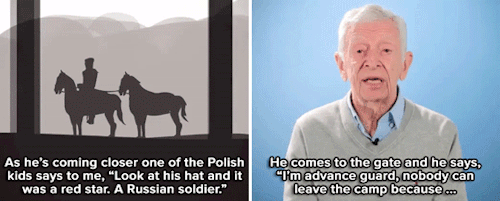
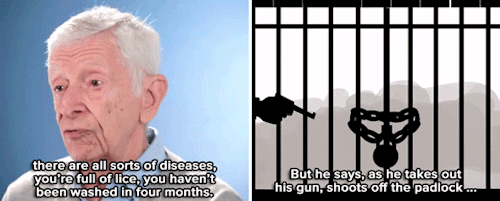
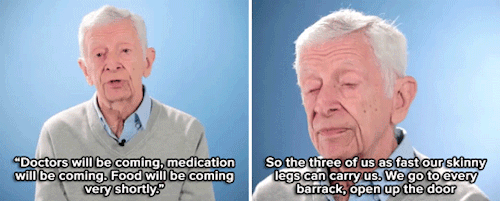
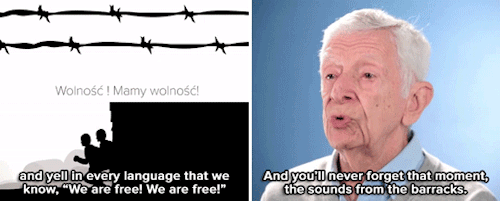
Watch: The most wonderful moment of joy came when he entered a Nazi guard bungalow.
OHHHH. We call them.... actually we just call them window stickers. How fun!
Wait, what are jelly dreidels? Are they like, jelly in a dreidel mold? I am *intrigued*
Oh, no! They’re like those little....remember the sticky hands from elementary school, and you could stick them to windows? Like those. They’re like window decals or clings, but easier to use and also 3D.
In linguistics, a filler is a sound or word that is spoken in conversation by one participant to signal to others that he/she has paused to think but is not yet finished speaking. These are not to be confused with placeholder names, such as thingamajig, which refer to objects or people whose names are temporarily forgotten, irrelevant, or unknown.
In Afrikaans, ah, em, and eh are common fillers.
In Arabic, يعني yaʿni (“I mean”) and وﷲ wallāh(i) (“by God”) are common fillers.[2][3][4]
In American Sign Language, UM can be signed with open-8 held at chin, palm in, eyebrows down (similar to FAVORITE); or bilateral symmetric bent-V, palm out, repeated axial rotation of wrist (similar to QUOTE).
In Bengali, mane (“it means”) is a common filler.
In Catalan, eh /ə/, doncs (“so”), llavors (“therefore”), and o sigui (“it means”) are common fillers.
In Czech, tak or takže (“so”), prostě (“simply”), jako (“like”) are used as fillers. Čili (“or”) and že (“that”, a conjunction) might also be others. A person who says jako and prostě as fillers might sound a bit simple-minded to others.[5]
In Danish, øh is one of the most common fillers.
In Dutch, eh, ehm, and dus are some of the more common fillers.
In Esperanto, do (“therefore”) is the most common filler.
In Filipino, ah, eh, ay, and ano are the most common fillers.
In Finnish, niinku (“like”), tota, and öö are the most common fillers.
In French, euh /ø/ is most common; other words used as fillers include quoi (“what”), bah, ben (“well”), tu vois (“you see”), and eh bien (roughly “well”, as in “Well, I’m not sure”). Outside of France, other expressions are tu sais (“you know”), t’sais’veux dire? (“you know what I mean?”), or allez une fois (“go one time”). Additional filler words include genre (“kind”), comme (“like”), and style (“style”; “kind”)
In German, a more extensive series of filler words, called modal particles, exists, which actually do give the sentence some meaning. More traditional filler words are äh /ɛː/, hm, so /zoː/, tja, and eigentlich (“actually”)
In Hebrew, eh is the most common filler. Em is also quite common.
In Hindi, matlab (“it means”) and “Mah” are fillers.
In Hungarian, common filler words include hát (well…) and asszongya (a variant of azt mondja, which means “it says here…”).
In Icelandic, a common filler is hérna (“here”). Þúst, a contraction of þú veist (“you know”), is popular among younger speakers.
In Indonesian (Bahasa Indonesia), anu is one of the most common fillers.
In Italian, common fillers include “tipo” (“like”), “ecco” (“there”) and “cioè” (“actually”)
In Irish Gaelic, abair /ˈabˠəɾʲ/ (“say”), bhoil /wɛlʲ/ (“well”), and era /ˈɛɾˠə/ are common fillers, along with emm as in Hiberno-English.
In Japanese, common fillers include eetto, ano, sono, and ee.
In Kannada,Matte for also,Enappa andre for the matter is are the common fillers.
In Korean, eung, eo, ge, and eum are commonly used as fillers.
In Lithuanian, nu, am and žinai (“you know”) are common fillers.
IN Maltese and Maltese English, mela (“then”), or just la, is a common filler.
In Mandarin Chinese, speakers often say 这个 zhège/zhèige (“this”) or 那个 nàge/nèige (“that”). Another common filler is 就 jìu (“just/precisely”).
In Norwegian, common fillers are øh, altså, på en måte (“in a way”), ikke sant (literally “not true?”, “no kidding”, or “exactly”), vel (“well”), and liksom (“like”). In Bergen, sant (“true”) is often used instead of ikke sant. In the Trøndelag region, skjø’ (“see?” or “understand?”) is also a common filler.
In Persian, bebin (“you see”), چیز “chiz” (“thing”), and مثلا masalan (“for instance”) are commonly-used filler words. As well as in Arabic and Urdu, يعني yaʿni (“I mean”) is also used in Persian. Also, eh is a common filler in Persian.
In Portuguese, tipo (“like”) is the most common filler.
In Romanian, deci /detʃʲ/ (“therefore”) is common, especially in school, and ă /ə/ is also very common (can be lengthened according to the pause in speech, rendered in writing as ăăă), whereas păi /pəj/ is widely used by almost anyone.
In Russian, fillers are called слова-паразиты (“vermin words”); the most common are Э-э (“eh”), это (“this”), того (“that”), ну (“well”), значит (“it means”), так (“so”), как его (“what’s it [called]”), типа (“like”), and как бы (“[just] like”).
In Serbian, znači (“means”) and ovaj (“this”) are common fillers.
In Slovak, oné (“that”), tento (“this”), proste (“simply”), or akože are used as fillers. The Hungarian izé (or izí in its Slovak pronunciation) can also be heard, especially in parts of the country with a large Hungarian population. Ta is a filler typical of Eastern Slovak and one of the most parodied features.
In Slovene, pač (“but”, although it has lost that meaning in colloquial, and it is used as a means of explanation), a ne? (“right?”), and no (“well”) are some of the fillers common in central Slovenia, including Ljubljana.
In Spanish, fillers are called muletillas. Some of the most common in American Spanish are e /e/, este (“this”), and o sea (roughly means “I mean”).[6], in Spain the previous fillers are also used, but ¿Vale? (“right?”) and ¿no? are very common too.
In Swedish, fillers are called utfyllningsord; some of the most common are öhm, ja (“yes”), ba (comes from “bara”, which means “just”), asså or alltså (“therefore”, “thus”), va (comes from “vad”, which means “what”), and liksom and typ (both similar to the English “like”).
In Ukrainian, ой /ɔj/ is a common filler.
In Urdu, yani (“meaning…”), falan falan (“this and that”; “blah blah”), umm, and aaa are also common fillers.
In Telugu, ikkada entante (“Whats here is…”) and tarwatha (“then…”) are common and there are numerous like this.
In Tamil, paatheenga-na (“if you see…”) and apparam (“then…”) are common.
In Turkish, yani (“meaning…”), şey (“thing”), “işte” (“that is”), and falan (“as such”, “so on”) are common fillers.
In Welsh, de or ynde is used as a filler (loosely the equivalent of “You know?” or “Isn’t it?”). Ym… and Y… are used similarly to the English “um…”.

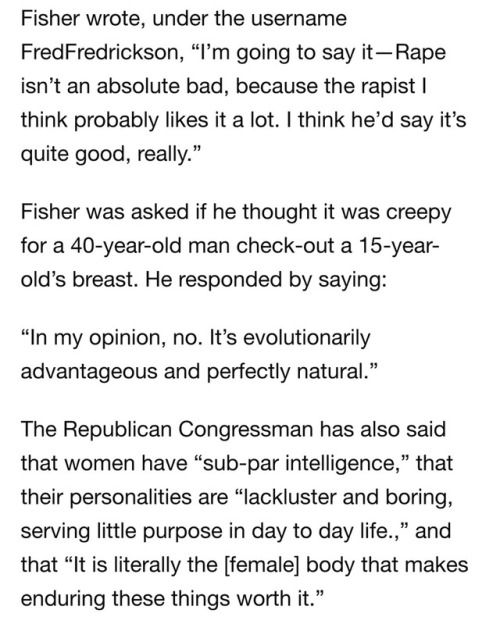
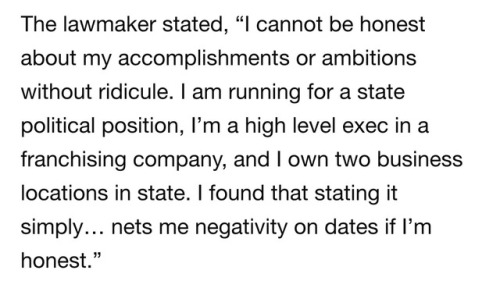
A New Hampshire Republican State Representative anonymously created the “Red Pill” subreddit.
Wow.
There are probably around 200 kids in my grade at my high school, and I don't really know eveyrone, but I'd estimate that between 10 and 15 of us are out as trans and/or nonbinary (5-8% of the grade). I've also noticed that the younger grades have more queer kids. (like, there are more queer freshman than sophomores, for example).
Do high school kids these days just have trans classmates now. Like I keep seeing zoomer posts casually referring to it. Fucking wild if true.

#SaveTheTrees
Anon Hate IS Illegal.
Guys, I’m not kidding.
Suicide-baiting, cyberharassmemt, cyberstalking, death/rape threats, and hate speech are illegal in all 50 states as well as Australia and the UK.
Some places include school suspension or expels. Some even include jail time for multiple years.
And yes, they can find someone by username or IP alone.
Also, yes. There are methods of catching someone’s IP. Even under a VPN.
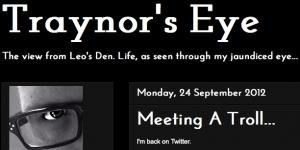
So.
Next time you get hit with anon hate?
Casually remind them you can very easily take this to the next level. And they can earn jail time while you lay back in your chair, having saved yourself and everyone else from a violent criminal.
Your online actions have real life consequences.
Make sure they learn that.
(Just in case there’s a “the police wouldn’t do that” - Yes. They absolutely would.



Or a “I can handle it.” No. That person will continue to harass others as well. And one of them may not be as strong as you. So do it for them and everyone else.
Or a “It’s not that severe.” Yes. It is. People have died because of this. It really is that severe.)
Take action. And make sure the lives of these bullies are truly wrecked.
-
 queernrrd reblogged this · 1 week ago
queernrrd reblogged this · 1 week ago -
 queernrrd liked this · 1 week ago
queernrrd liked this · 1 week ago -
 gloomycentipede reblogged this · 1 week ago
gloomycentipede reblogged this · 1 week ago -
 allergic-to-four-leaf-clovers reblogged this · 1 week ago
allergic-to-four-leaf-clovers reblogged this · 1 week ago -
 corvidat reblogged this · 1 week ago
corvidat reblogged this · 1 week ago -
 skyshrieker reblogged this · 1 week ago
skyshrieker reblogged this · 1 week ago -
 skyshrieker liked this · 1 week ago
skyshrieker liked this · 1 week ago -
 capsiclesworldsblog reblogged this · 2 weeks ago
capsiclesworldsblog reblogged this · 2 weeks ago -
 yungstorky liked this · 2 weeks ago
yungstorky liked this · 2 weeks ago -
 yungstorky reblogged this · 2 weeks ago
yungstorky reblogged this · 2 weeks ago -
 thaqueenwizard reblogged this · 2 weeks ago
thaqueenwizard reblogged this · 2 weeks ago -
 thaqueenwizard liked this · 2 weeks ago
thaqueenwizard liked this · 2 weeks ago -
 spacejunksinshambles reblogged this · 2 weeks ago
spacejunksinshambles reblogged this · 2 weeks ago -
 vineraton reblogged this · 2 weeks ago
vineraton reblogged this · 2 weeks ago -
 vineraton liked this · 2 weeks ago
vineraton liked this · 2 weeks ago -
 hawaiiminee reblogged this · 2 weeks ago
hawaiiminee reblogged this · 2 weeks ago -
 apricityxys liked this · 2 weeks ago
apricityxys liked this · 2 weeks ago -
 baskabytheanglerfish liked this · 2 weeks ago
baskabytheanglerfish liked this · 2 weeks ago -
 hardworkin-queerdo reblogged this · 2 weeks ago
hardworkin-queerdo reblogged this · 2 weeks ago -
 left-hand-of-harkness reblogged this · 2 weeks ago
left-hand-of-harkness reblogged this · 2 weeks ago -
 left-hand-of-harkness liked this · 2 weeks ago
left-hand-of-harkness liked this · 2 weeks ago -
 aliencomicinvasion reblogged this · 2 weeks ago
aliencomicinvasion reblogged this · 2 weeks ago -
 aliencomicinvasion liked this · 2 weeks ago
aliencomicinvasion liked this · 2 weeks ago -
 sleepynatterz reblogged this · 2 weeks ago
sleepynatterz reblogged this · 2 weeks ago -
 ofwhimsicaldreams reblogged this · 2 weeks ago
ofwhimsicaldreams reblogged this · 2 weeks ago -
 thewoed liked this · 2 weeks ago
thewoed liked this · 2 weeks ago -
 netsage liked this · 2 weeks ago
netsage liked this · 2 weeks ago -
 beetlesquared reblogged this · 2 weeks ago
beetlesquared reblogged this · 2 weeks ago -
 lyraivy liked this · 2 weeks ago
lyraivy liked this · 2 weeks ago -
 stupid-and-lustful liked this · 2 weeks ago
stupid-and-lustful liked this · 2 weeks ago -
 bluequeerio reblogged this · 2 weeks ago
bluequeerio reblogged this · 2 weeks ago -
 bluequeerio liked this · 2 weeks ago
bluequeerio liked this · 2 weeks ago -
 on-mercury reblogged this · 2 weeks ago
on-mercury reblogged this · 2 weeks ago -
 chalkadow reblogged this · 2 weeks ago
chalkadow reblogged this · 2 weeks ago -
 littlefandomcorner reblogged this · 2 weeks ago
littlefandomcorner reblogged this · 2 weeks ago -
 kingofkaumidy reblogged this · 2 weeks ago
kingofkaumidy reblogged this · 2 weeks ago -
 redroomgraduate reblogged this · 2 weeks ago
redroomgraduate reblogged this · 2 weeks ago -
 artistsartista reblogged this · 2 weeks ago
artistsartista reblogged this · 2 weeks ago -
 artistsartista reblogged this · 2 weeks ago
artistsartista reblogged this · 2 weeks ago -
 starburstkitty reblogged this · 2 weeks ago
starburstkitty reblogged this · 2 weeks ago -
 sierrasheep reblogged this · 2 weeks ago
sierrasheep reblogged this · 2 weeks ago -
 g00nerfox reblogged this · 2 weeks ago
g00nerfox reblogged this · 2 weeks ago -
 g00nerfox liked this · 2 weeks ago
g00nerfox liked this · 2 weeks ago -
 artalicsoul liked this · 2 weeks ago
artalicsoul liked this · 2 weeks ago -
 fandomshinobi reblogged this · 2 weeks ago
fandomshinobi reblogged this · 2 weeks ago -
 socialisttails liked this · 2 weeks ago
socialisttails liked this · 2 weeks ago -
 nb-bearbabe reblogged this · 2 weeks ago
nb-bearbabe reblogged this · 2 weeks ago -
 marked4evil reblogged this · 2 weeks ago
marked4evil reblogged this · 2 weeks ago -
 skadisprawl reblogged this · 2 weeks ago
skadisprawl reblogged this · 2 weeks ago
